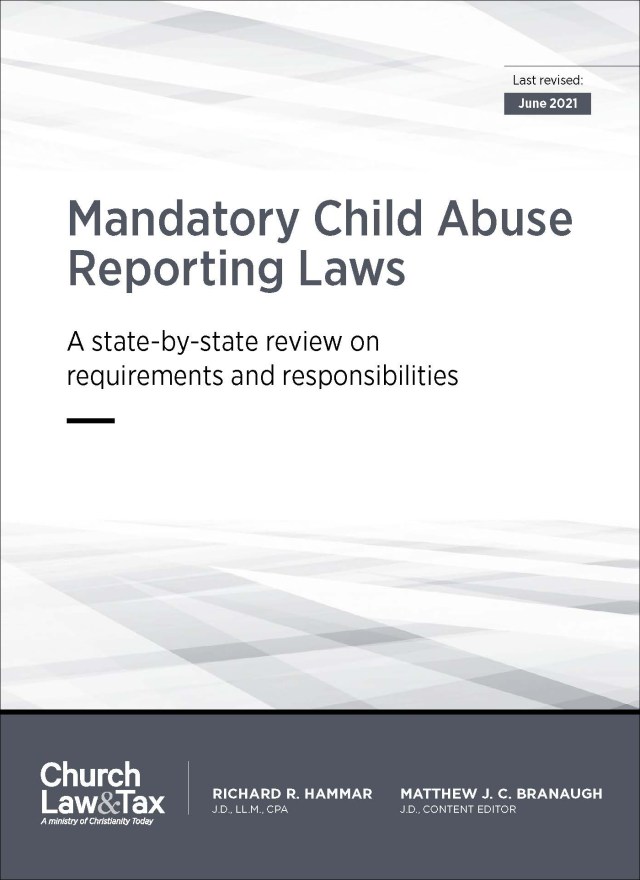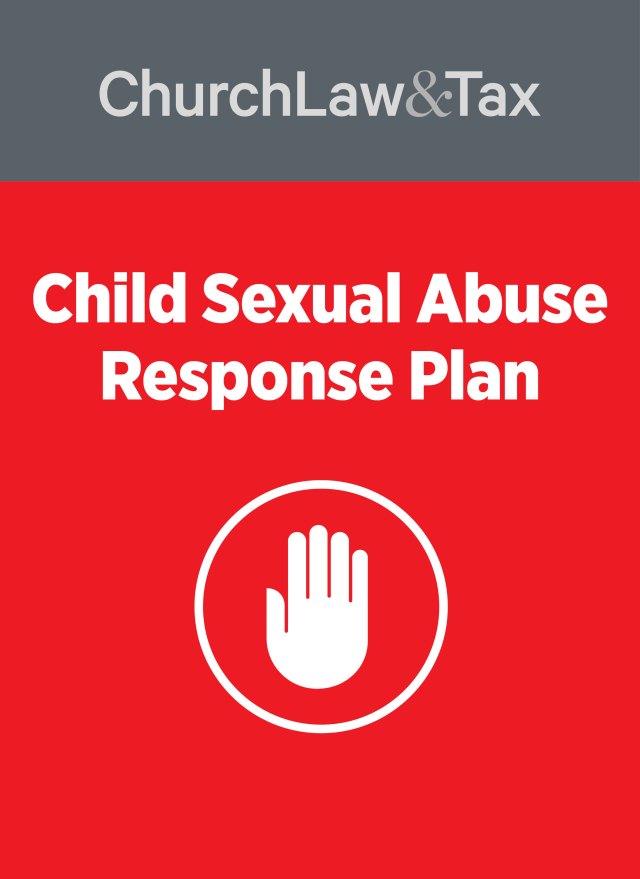• Key point. Minors who are sexually molested by church workers may not sue their church after the statute of limitations has expired. Generally, the statute of limitations begins to run on a minor’s 18th birthday. In some states the statute of limitations does not begin to run until an adult survivor of child sexual molestation “discovers” that he or she has experienced physical or emotional suffering as a result of the molestation. Other states do not recognize this so-called “discovery rule.”
A Wisconsin court ruled that the statute of limitations barred an adult from suing a church and diocese for injuries he allegedly sustained as a result of a priest’s acts of child molestation. A 10-year-old boy (the “victim”) and his parents began attending a Catholic church in 1980. The priest sexually assaulted the victim on numerous occasions during 1983 and 1984. The victim did not tell anyone about this at the time. The priest told the victim that if he told anyone, no one would believe him. The victim thought about telling his parents but did not because he did not know how they would react. The same priest had sexually abused other boys since 1977 at various diocesan parishes where he was assigned. He molested at least four other boys in the same church the victim attended, at about the same time. Two of these boys talked to each other about the abuse and decided to tell their parents. They did so in the spring of 1984, and the parents met with church officials. As a result of this meeting, and the disclosure of other victims, the bishop removed the priest from the church. The victim never saw the priest after this time. Although his parents discussed the priest’s absence, he did not tell them what the priest had done to him. The victim saw a number of health professionals over the years after the assaults, but he never told them, or anyone, because he was ashamed and frightened. He did not forget about it but tried to think about it as little as possible. The first time he told anyone was in a conversation with his uncle in early 1994; he stated at that time only that he had been abused. Soon afterwards, he told his wife and his parents. It was the opinion of a licensed psychologist that, “given the totality of what had occurred in [his] life up to 1994, he could not reasonably have been expected to make inquiries prior to that time with regard to the nature of any injuries he incurred as a result of the sexual assaults by [the priest], the cause of those injuries or [the priest’s] part of the cause.”
The victim’s parents did not learn he had been assaulted by the priest until the spring of 1994 when the victim told them. Shortly after the family began attending the church when the victim was a boy, his parents observed that he underwent intense personal suffering, withdrew from his family and made three suicide attempts. During the victim’s middle and high school years, his mother repeatedly spoke to the director of religious instruction at their church about the emotional pain her son was experiencing, including the suicide attempts, and the resulting family turmoil. Neither the diocese, the church, nor their representatives, ever told the victim’s parents that the priest had sexually abused children at their church or that their son’s difficulties were consistent with the behavior of children who had been sexually abused. In an effort to discover the reasons for their son’s unhappiness, the parents consulted with numerous professionals, but none of those efforts revealed that the victim had been sexually abused. His parents blamed themselves for their son’s condition and sought professional help for their own emotional distress.
The victim filed suit in 1994, seeking compensatory and punitive damages. He alleged that the church and diocese were legally responsible for his emotional damages on the basis of negligent placement, retention and supervision; respondeat superior and apparent authority; and failure to report the abuse to authorities. The victim’s parents also sued the church and diocese. The trial court dismissed the lawsuits on the basis of the statute of limitations, and the victim and his parents appealed. The court concluded that the victim knew the identity of the perpetrator and was aware that what had occurred was wrongful, harmful and not sanctioned by the Catholic Church. His claims therefore accrued when the abuse occurred. The court noted that the statute of limitations for personal injuries to a minor expires on the person’s twentieth birthday. Since the victim turned twenty in 1990, his lawsuit, which was not filed until 1994, was not timely.
The victim and his parents appealed. The victim argued that he did not “discover” the relationship between his suffering and the priest’s assaults until 1994, and his claims did not accrue until that date, making his lawsuit timely. His parents made a similar argument. The court rejected these attempts to extend the statute of limitations. It concluded: “As a matter of law, [the victim] discovered, or in the exercise of reasonable diligence should have discovered, the cause of his injury at least by the time of the last incident of assault, in May of 1984. Therefore, his claims against the diocese and [church] as well as those against [the priest] accrued no later than the time of the last assault. [He] had to file those claims within two years of his eighteenth birthday, and his failure to do so means they are untimely.” The court also concluded that the statute of limitations for the parents was the same as for their son, even though he did not tell them about the abuse until years later.
With respect to the victim’s claim that the church and diocese were liable as a result of their failure to report the priest’s acts of child abuse, the court concluded that this basis of liability (assuming that it exists) was also barred by the statute of limitations since it “derived” from the victim’s other claims.
Application. This case is important for three reasons. First, the court refused to apply the “discovery rule”. Most courts have reached a similar conclusion, and have refused to allow adults to sue for acts of child molestation-especially if they were adolescents at the time of the molestation. It is very difficult for such persons to convince a court that they were previously unaware of the wrongful acts or of their own injuries. Second, the court barred the victim’s parents from suing, even though they filed their lawsuit shortly after being informed by their adult son of the molestation. Third, the court refused to hold the church and diocese liable on the basis of their failure to comply with the state child abuse reporting law. The court concluded that such a claim “derived” from the victim’s other claims, and therefore it was similarly barred by the statute of limitations. In short, an adult who was molested while a minor by a church worker, and whose negligence claims against his or her church are barred by the statute of limitations, cannot sue the church for an alleged failure to report the abuse. The “failure to report” claim derives from the negligence claims, and so it must be dismissed if the underlying negligence claims are barred by the statute of limitations. Joseph W. v. Catholic Diocese, 569 N.W.2d 795 (Wis. App. 1997). [Seduction of Counselees and Church Members, Negligence as a Basis for Liability, Denominational Liability]
© Copyright 1999 by Church Law & Tax Report. All rights reserved. This publication is designed to provide accurate and authoritative information in regard to the subject matter covered. It is provided with the understanding that the publisher is not engaged in rendering legal, accounting, or other professional service. If legal advice or other expert assistance is required, the services of a competent professional person should be sought. Church Law & Tax Report, PO Box 1098, Matthews, NC 28106. Reference Code: m67 m40 m86 c0299


